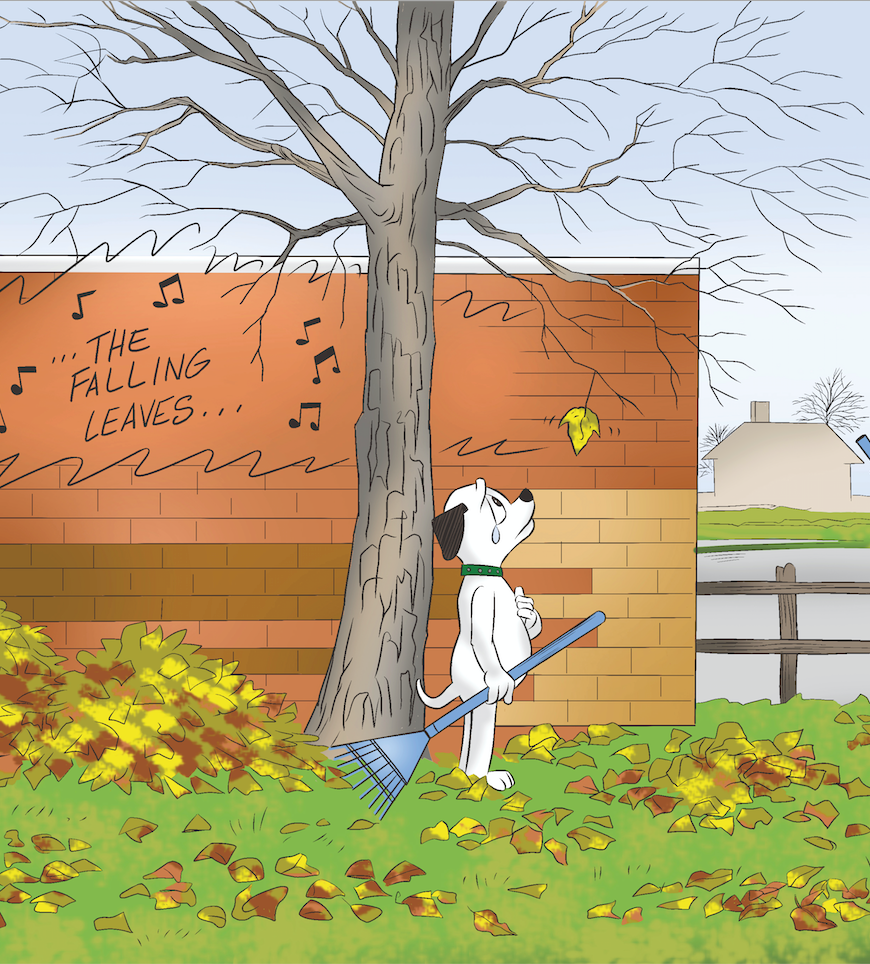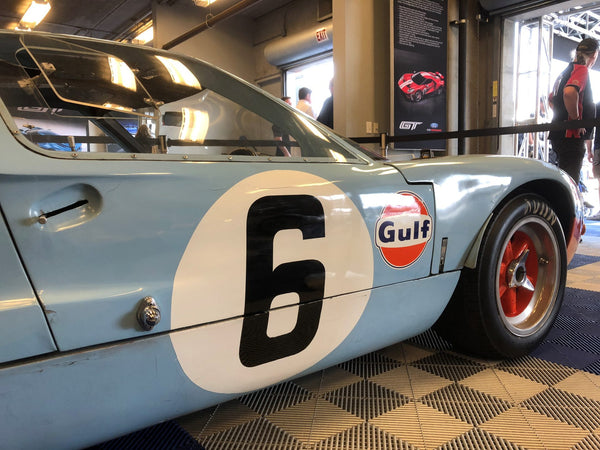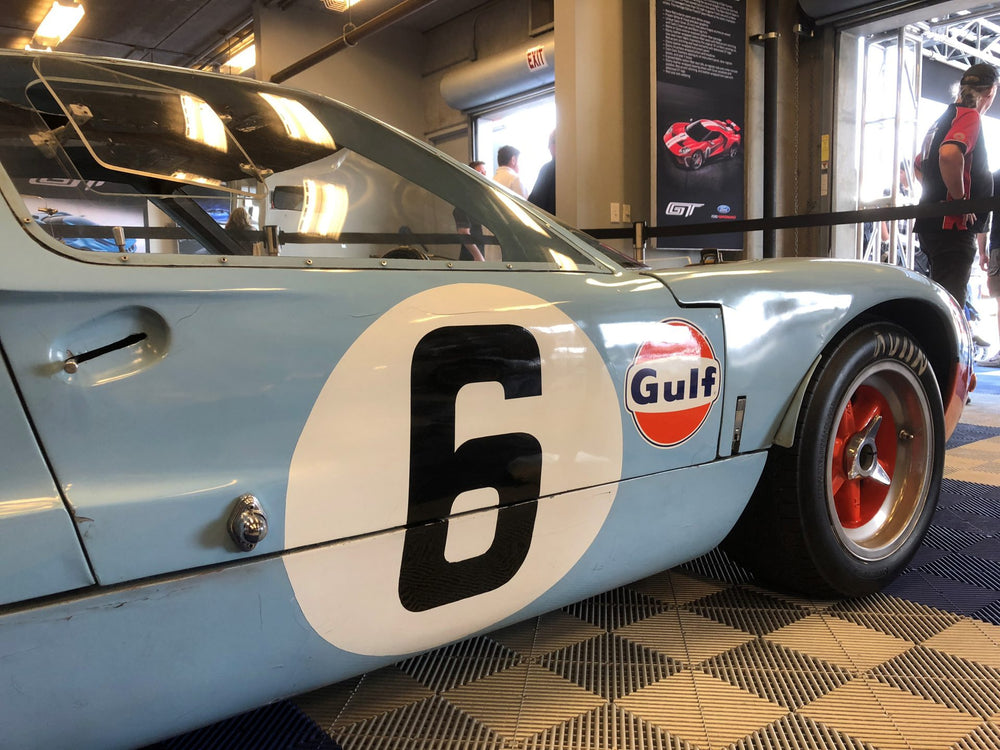Actually, it was in 2002, but that’s okay. I was in LA on business for a week, and found myself in Beverly Hills one evening, strolling along Rodeo Drive (as one does…). It was a beautiful, warm and sunny, early spring evening, and I was just taking in the sights, hoping to work up a pre-supper appetite. At one point on the sidewalk I came upon a large knot of glamorous-looking types, apparently waiting idly to get into a night club. I didn’t want to be pushing my way through, so I aimed myself at the edge of the crowd by the curbside, and figured I’d just skirt my way past.
But as I turned to check that the road was clear, a large black SUV came barreling along right next to the curb, and pulled up with a screech alongside the crowd. The door to the SUV opened, and somebody flew out, straight into me. I turned to murmur an apology (hey, I’m British), but the person bounced off me, and – quite literally – ran straight into the now-open doors of the establishment. It was Elton John. I later learned that this was his birthday party, and was considered to be the hot ticket in LA that week.
I was motivated to write this because this very week Elton John’s farewell tour makes its stop in Montreal. Last time he came here, my wife and I scored tickets and it was an amazing concert. He played a solid two hours of nothing but Elton John’s Greatest Hits. Still: at the end of it, everyone in the audience had favorites that hadn’t made the set list. Really, who else can you say that of? But now the guy’s hanging up his piano stool for good.
I’ve never been what you’d call a huge Elton John fan, but I have to say that he does manage to pull an exceptional song or two out of his hat on a fairly regular basis. And if you do that for nearly 50 years what you end up with is a lengthy set list of exceptional songs.
Like a lot of people of my generation, Goodbye Yellow Brick Road was the album that turned serious music fans on to a performer who up until then had been known as a purveyor of lightweight girly pop tunes aimed at the singles charts (yes, “Your Song”, I’m looking at you!). But you couldn’t help but be mesmerized by “Funeral For A Friend” and its segue into “Love Lies Bleeding”, by which time you were hooked. That was Elton John??? For me, Yellow Brick Road is one of three EJ albums which I count as masterpieces, the other two being Captain Fantastic And The Brown Dirt Cowboy and its career bookend partner The Captain And The Kid. It is the last of those that I want to talk about today, because my guess is that most of you who know the first two well, will be completely unfamiliar with it. I actually think it’s the best of the lot.
But first, some musings on rock music in general, and the career arcs of its earliest practitioners who (assuming they made it this far) are now drawing their pensions. Because here’s the thing: it’s a young person’s game. The vast majority of the great rock classics were written by kids; there were no geezer bands during the birth of rock. Really, you don’t have to wonder why that was. In the sphere of classical music, we usually find that composers tend to write better and more profound music the older they get – even well into their eighties. And in jazz circles, we find little diminution in the creativity of its greatest exponents over decades-long performing careers. But on rock’s geezer-band circuit, we find very few performers who are playing anything other than their old ’70s and ’80s repertoire, and certainly very few audiences who want to hear anything else.
Actually, there is a pretty good reason for that. Popular music is music for young people, by young people. By its very nature it is new, and of the moment. It is edgy and unsophisticated. There is a wonderful quote from Roger Waters of Pink Floyd, when he was asked to look back on Dark Side Of The Moon and give his perspective on it with 40 years of hindsight. His comment was “Well … it’s a bit sixth form, isn’t it”. If you’re British, you’ll get that: “Sixth Form” equates more or less to a high school senior, in a class being prepped for university.
So, as a writer of intelligent music (or intelligent lyrics for intelligent music), it stands to reason that as you mature, your output will also mature. It will become more thoughtful, more trenchant, better structured, more sophisticated. This is the challenge facing popular music genres. Does sophistication inevitably bring about the loss of that raw, youthful edge? Can a sophisticated musician ‘dumb down’ his output and create unsophisticated music? And even if he could, would he want to? Sadly, many would appear to be on a creative down-spiral, suggesting that they may have missed the turn on the road to sophistication.
But surely, you say, there is no such thing as sophisticated rock music (or sophisticated hip-hop, or sophisticated thrash metal, …)! Well, I don’t know about that … after all, Quadrophenia was pretty damn sophisticated. But certainly the late output of rock’s aging superstars tends to garner far, far less in the way of popular attention than their less mature, but famous, early work. Certainly, the interests of the audiences who spend generously to pay homage at their sold-out tours lie firmly in the old, old classics. And in case you think I’m delivering a side-swipe of an insult, I should point out I have been to many such concerts myself.
One of the difficulties faced by a sophisticated aging rocker is that while their audiences might be expecting them to remain true to their roots, perhaps their process of maturation has taken them in other musical directions. What are we to make of the aforementioned Roger Waters and his opera Ça Ira? If I’m an old Pink Floyd fan who’s never much liked opera, do I go out of my way to seek it out because – hey – it’s Roger Waters, man! These are tough challenges, on both sides of the stage lights.
However, Elton John and Bernie Taupin have met that challenge head on, and overcome it. For well over 40 years, they have been churning out quality pop-rock to a very consistent standard, and even some of their late-era work has been outstanding.
Which brings me back to The Captain And The Kid which was, incredibly, Elton John’s 30th studio album.
It was way back in 1975 that Elton John released Captain Fantastic and the Brown Dirt Cowboy, an overtly autobiographical account of John and Taupin’s early years leading up to their eventual commercial success, beginning in 1970. Elton John himself always considered it his finest album, and I personally agreed with that sentiment. Maybe its quality arose from the fact that he spent far more time and effort on it than any other, due, presumably, to the depth and honesty of its autobiographical content.
Much to my surprise, in 2006 Elton John released The Captain And The Kid, which carried on where the previous album left off. Acting as a bookend to his career, it examined the new-found highs – and lows – of their superstardom. And much to my surprise and joy, I found I liked it even better than the earlier magnum opus. It just has that extra edge of sophistication, without losing the soul of what it takes to be an Elton John album.

A brief outline of the tracks follows:
Postcards From Richard Nixon
This first-rate opener is about John and Taupin’s move to the USA, and the major culture shock that it represented. Their stay outlasted Nixon’s presidency:
“We heard Richard Nixon say
I gotta go, but you can stay”
Just Like Noah’s Ark
This is Bernie Taupin’s version of Pink Floyd’s “Welcome To The Machine”. The music business just wants to eat you up and spit you out.
“We’re not as dumb as we might look
You can’t keep us in the dark”
Wouldn’t Have You Any Other Way (NYC)
Anything goes in New York City.
“Long black cars standing side-by-side
Loading up the boys at night”
Tinderbox
Success and fame can be fleeting, even if you’re a rock star.
“We were coasting on a winning streak
We were kings until the power failed”
And The House Fell Down
This song describes Elton John’s cocaine and alcohol addiction, and the problems that follow in its wake, like paranoia.
“Cause when you’re high as this
You think you know it all”
Blues Never Fade Away
One of Elton John’s greatest songs ever. Death comes in many guises – misfortune, self-inflicted, inflicted by others. While others get to live on …
“Who makes the call and who gets to choose
Who gets to win and who gets to lose?”
The Bridge
Just EJ and his piano. A truly awesome song. A metaphor for the pursuit of success, regardless of the field of endeavor. Success doesn’t just come to you – you have to make the effort to cross the bridge.
“Every one of us has to face that day.
Do you cross the bridge or do you fade away?”
I Must Have Lost it On The Wind
A meditation on the lovers and partners who come into and out of a long life, and the impact they have upon you.
“From one you learn something, and another you learn nothing,
And there’s one who might teach you everything”
Old ‘67
Oh my, we have come a long way since 1967 …
“Nearly froze to death on Oxford Street
Now we’re sitting in the South of France”
The Captain And The Kid
The album closes with a wistful but satisfied look in the mirror, and draws musically on its earlier counterpart, “Captain Fantastic and the Brown Dirt Cowboy”.
“The devil got to come to the party sometimes,
But he never got to wear our shoes”
Sadly, this devil never got to come to the party. He got barged out of the way at the door of the SUV!





























































